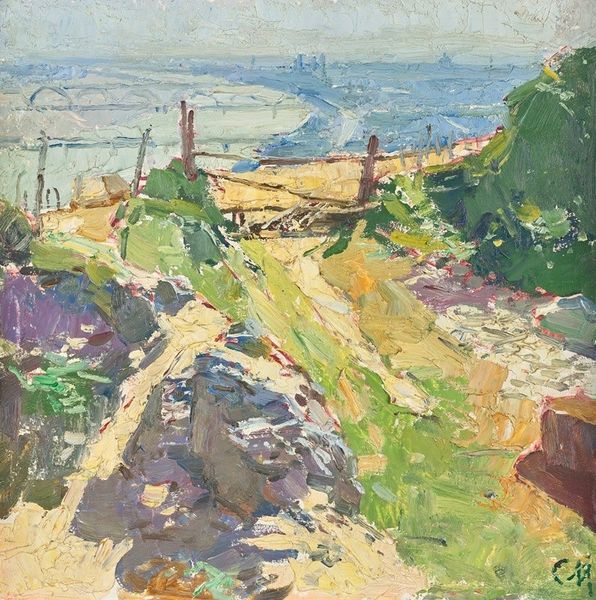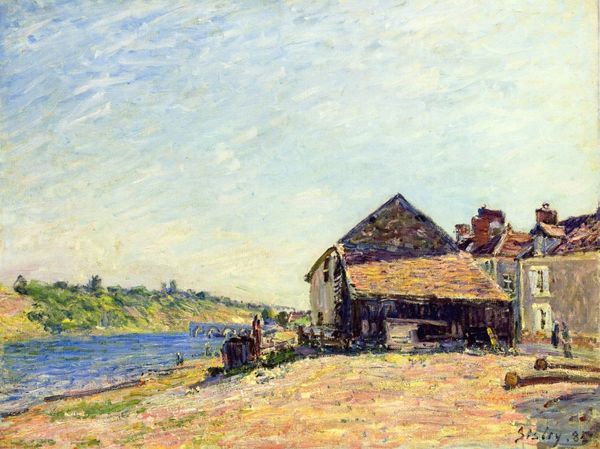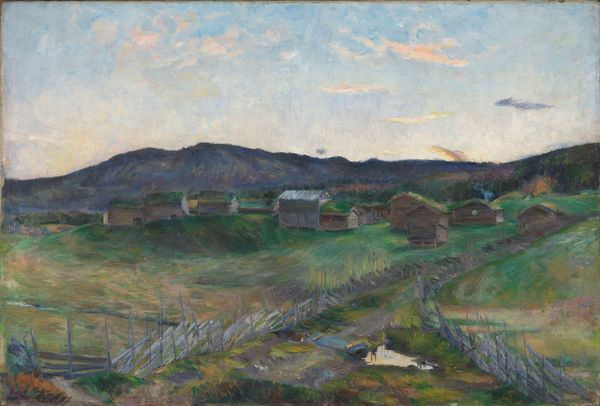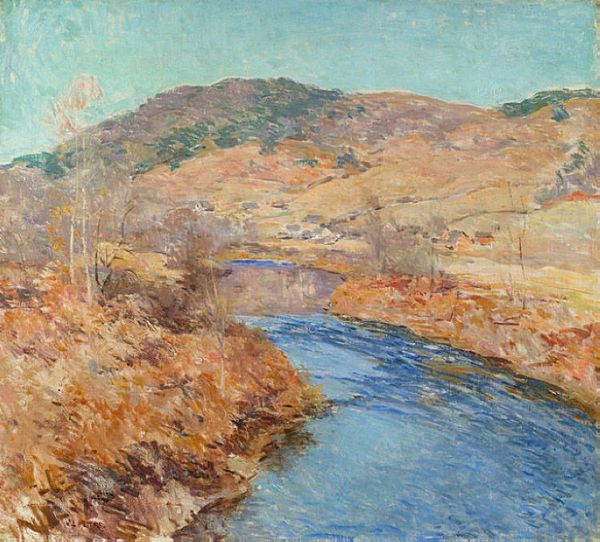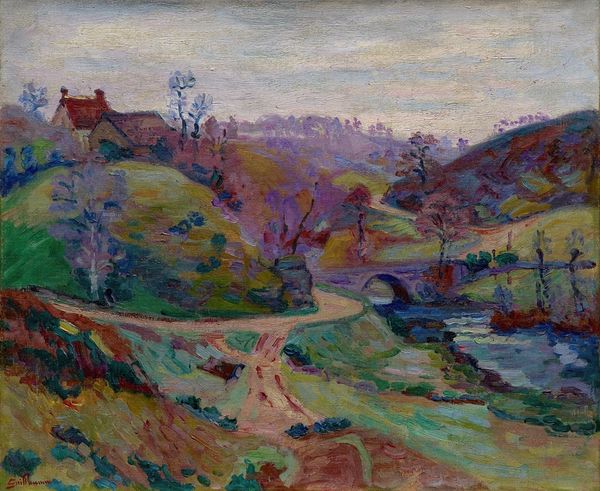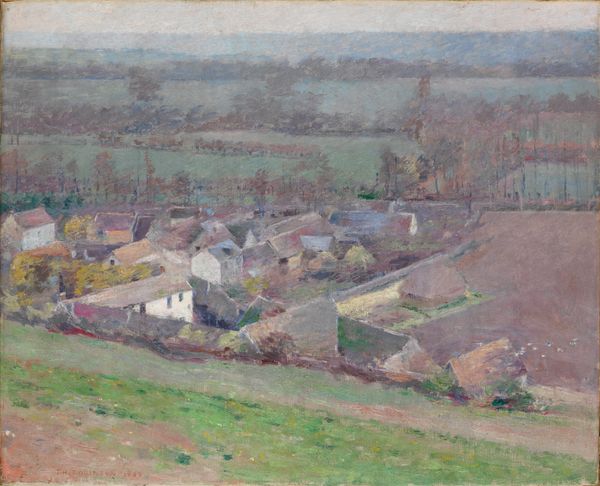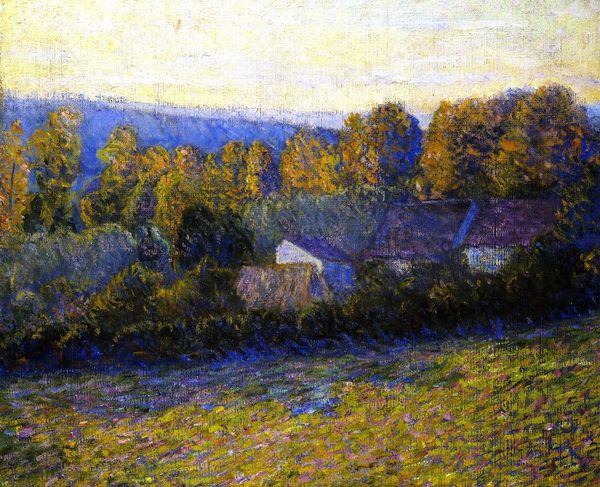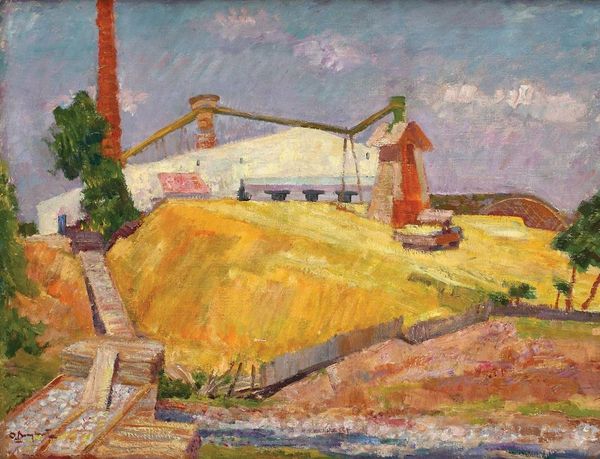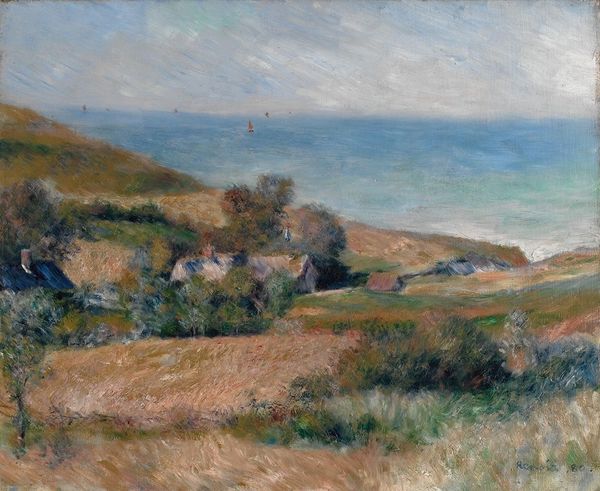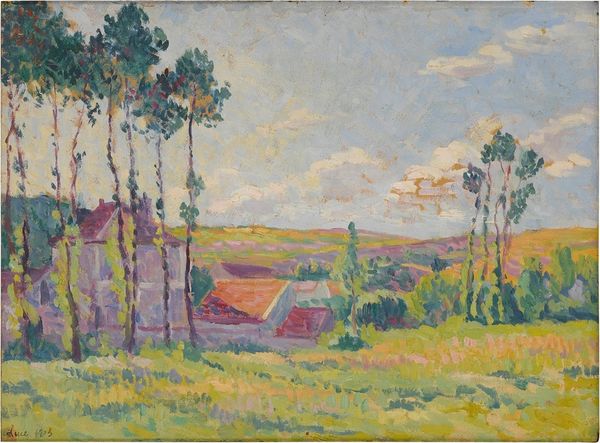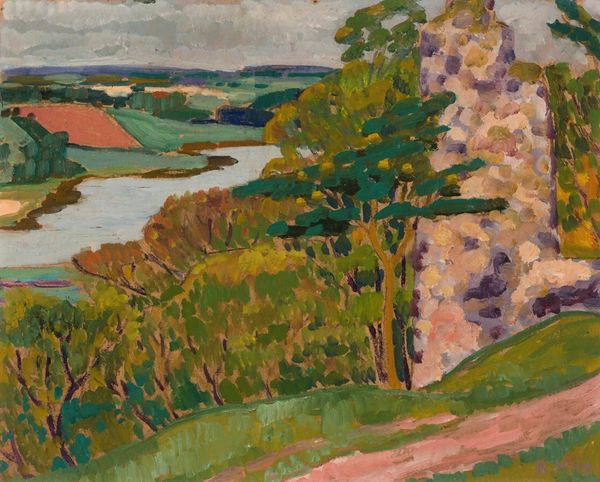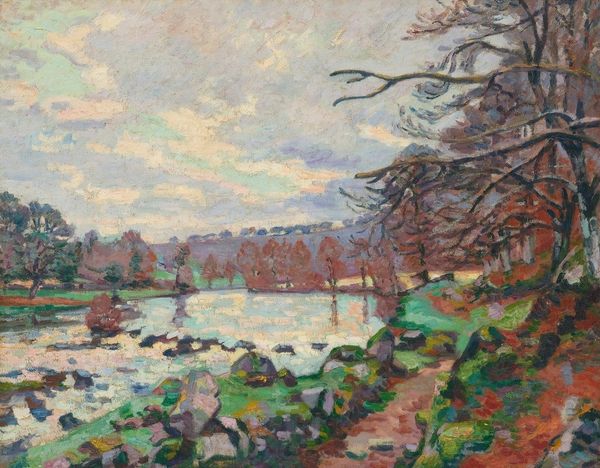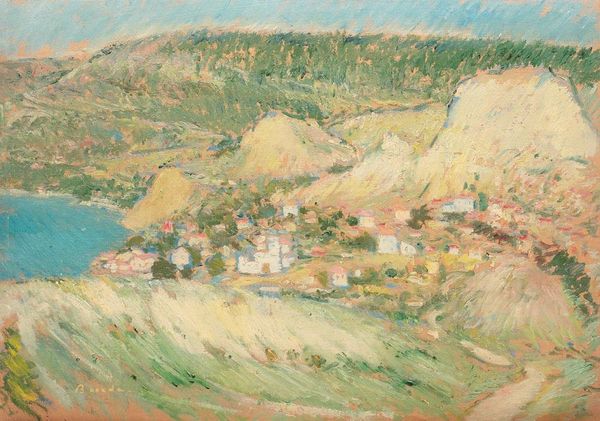
Copyright: Public domain
Editor: We're looking at Harald Sohlberg's "Solskin" from 1892, an oil painting. I’m immediately drawn to the contrast between the rough, almost tactile foreground and the serene, hazy background. It evokes a quiet, contemplative mood. What do you see in this piece, particularly regarding its place in art history? Curator: I see a work deeply entrenched in the burgeoning national romanticism of the late 19th century, but with a subtly subversive edge. Sohlberg, though working within the landscape tradition, seems to question its established visual language. How does the portrayal of light and nature speak to the Norwegian identity of that time? Editor: I hadn't thought of that. The light feels unique—soft but strong—almost as if he is exploring the quality of light within Norwegian landscapes specifically. Curator: Precisely! Think about the political context: Norway was still under Swedish rule. The emphasis on the unique character of the Norwegian landscape, like its distinct light, can be seen as a form of cultural resistance, subtly asserting a separate, independent identity. Note how the composition frames the wild landscape in the foreground while containing it to a human structure and placid water in the background. What kind of relationship does this create for the viewer, culturally or socially? Editor: I see what you mean. There’s almost a tension there, a dialogue between control and untamed nature. It’s as though Sohlberg uses the landscape to both define and question Norwegian identity. Curator: Exactly! It is about exploring how constructions of national identity are formed and contested through artistic representation. How do you see this interplay reflected in contemporary Norwegian society, after seeing the work? Editor: It's given me a new perspective on landscape art and its cultural significance. I will view landscapes now as not only aesthetic scenes but reflections and, at times, challenges of cultural and political identity. Thanks! Curator: Likewise. This piece clearly represents the power of art, doesn't it?
Comments
No comments
Be the first to comment and join the conversation on the ultimate creative platform.
